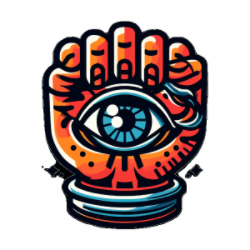Two years ago I signed up for a half-iron distance triathlon. I’d never done a triathlon before. I wasn’t living an active lifestyle, but the date was on the calendar and I was committed. I trained for eight months to cover 70.3 miles by swimming, biking, and running. Training required a roadmap, prioritization, and data. Lots of data. And lots of data-driven decisions. The connections with product management and UX are hard to miss.
Here are some takeaways from my triathlon training that have strong parallels in my work as a UX researcher:
- Diving Deep into Qual and Quant Data
My success (i.e. my ability to finish the race before the cutoff time) depends on my ability to analyze performance metrics and adapt accordingly. From monitoring heart rate, VO2, pace, and nutrition, to tracking sleep architecture and breath rate, I scrutinized every piece of data I could–collected via journaling and a Garmin watch–to optimize my training and performance. I overhauled my diet and changed my sleep schedule, which required abandoning things like streaming shows and movies after 9pm. As a UX researcher, I dive deep into behavioral data to gain insights and drive changes to optimize customer experiences. Customer experience could mean lots of different things (e.g. productivity, diet, headspace, satisfaction, contentment). The ability to synthesize and translate analytics into actionable insights is key.
- Translating Data into Actionable Insights
Triathlon training requires translating data into outcome-driven action. I didn’t know where to start, but I knew how to figure out where to start. How does diet affect performance in the pool, on the bike, on the road? What’s the relationship between time of day and training experience? I also identified information needs and pain points: What is the best diet for me as an endurance athlete? What are the benefits of a bike fitting? How do other people balance training with work and family time? What does my training and performance mean for my family? How can I balance the two? Answers to these and lots of other questions produced actionable insights that I used to iterate my training plan until I had it dialed in. By identifying my strengths and weaknesses, I tailored my training regimens for maximum efficiency. After I started training, it took 4-5mos to get dialed in. The ability to figure out how and where to start, to generate a dataset, and to prioritize and make data-driven decisions serves me well as a UX researcher.
- Understanding the Experience
To truly excel, I developed a deep understanding of the physical and mental challenges of training and competing. Part of this is rooted in the training itself, and part of this is rooted in assimilating into the culture of the sport. I read books (Iron War, Today We Die a Little!, and The Perfect Mile are standout recommendations for anybody–aspiring endurance athlete or not) and subscribed to magazines (h/t Triathlete). Among other things, this intimate knowledge of the endurance experience enabled me to identify obstacles and adopt strategies to push through. As a UX researcher, I bring this deep empathy and understanding to the study of users, especially their needs, pain points, and priorities.
- The Art of Suffering and Perseverance
I worked hard before training for a triathlon but felt like I was on a different plane of existence–rewiring my brain for the work–for eight months. I cultivated a deep appreciation for the meaning of hard work, the value of perseverance, and the rush of busting through barriers. I pushed through grueling training sessions. One foot in front of the other for two hours when, in my head, I was ready to turn around and go home after five minutes out. This relentless dedication to improvement translates perfectly to the world of UX. UX researchers must be tenacious. They must stick to and adapt their plans. I put one foot in front of the other for hours because I knew that if I didn’t, when the time came, I wouldn’t cross the finish line before the cutoff.
- Seeing the Bigger Picture
As a triathlete-in-training I strengthened my ability to build and maintain a long-term perspective. This is crucial. I set my goal, constantly measured progress, and appreciated the value of incremental improvements over time. I tracked daily and weekly performance data against milestones I had to hit and I tweaked my plans as needed in order to get my body and my data moving in the right direction. This strategic mindset serves well as UX researcher and product partner. I can take a step back, assess the overall research and/or product strategy, and make data-driven decisions to move the needle in the right direction..
While there are many ways to frame the qualities that make a good UX researcher, reflecting on UXR through an endurance athletics lens highlights a uniquely human, relatable, and enjoyable perspective. Ultimately, my intention is not to claim that this is the best or only lens, but to demonstrate the value of drawing inspiration from different facets of life. That’s part of being a curious human being.

Leave a comment